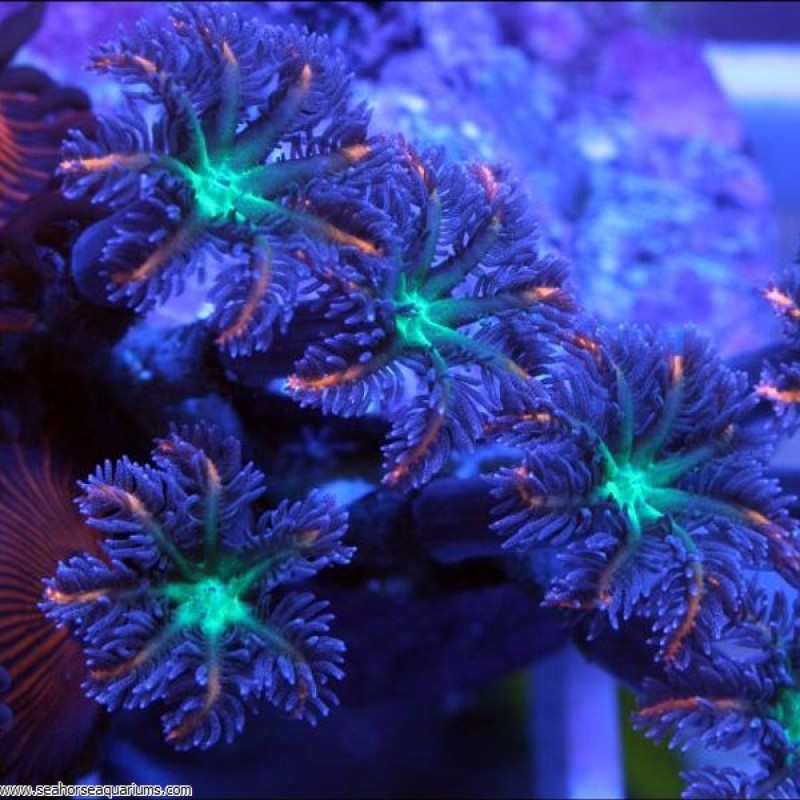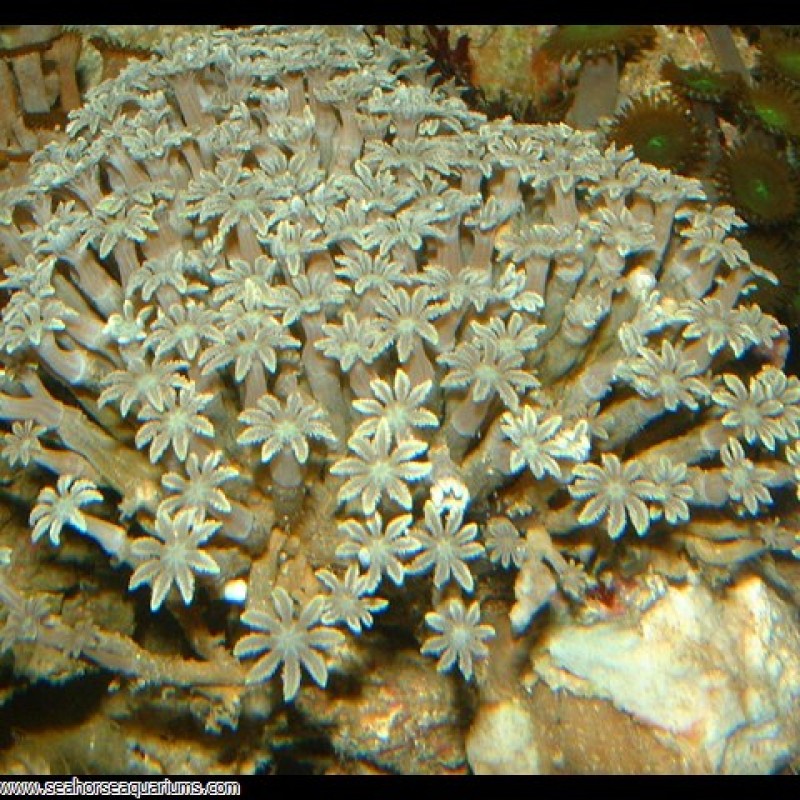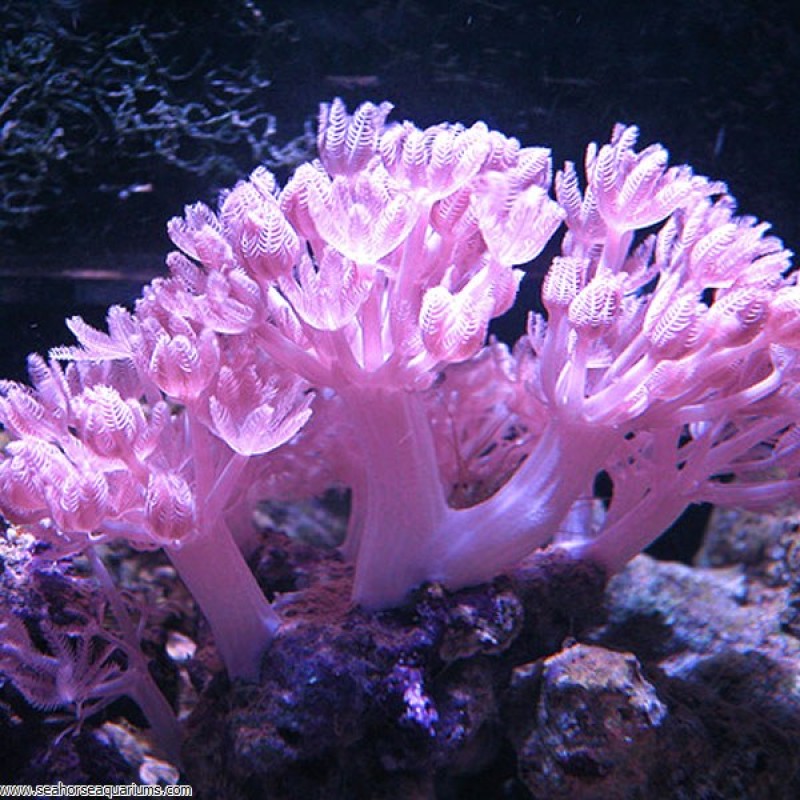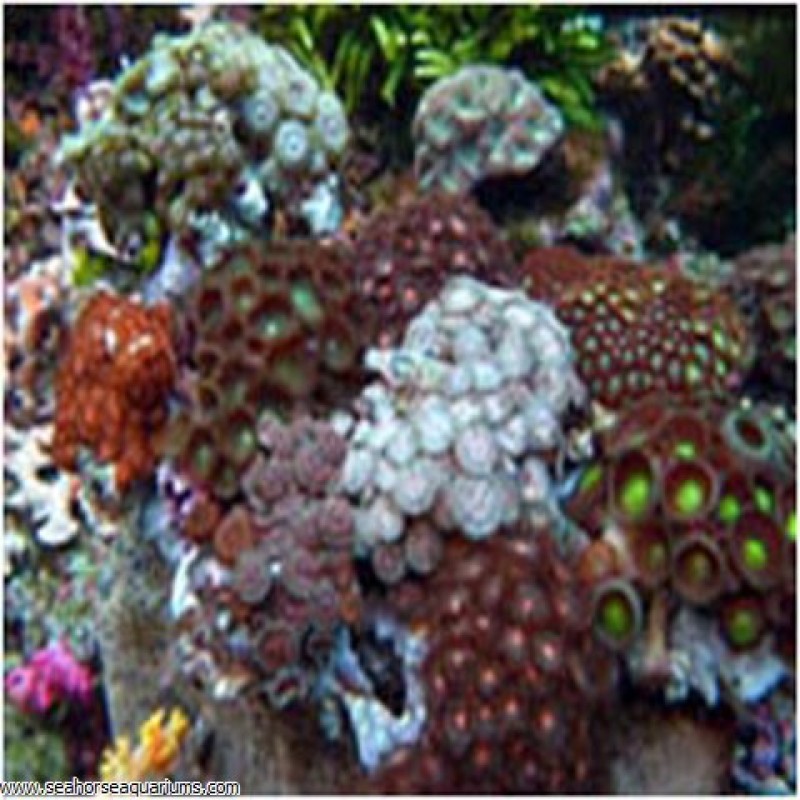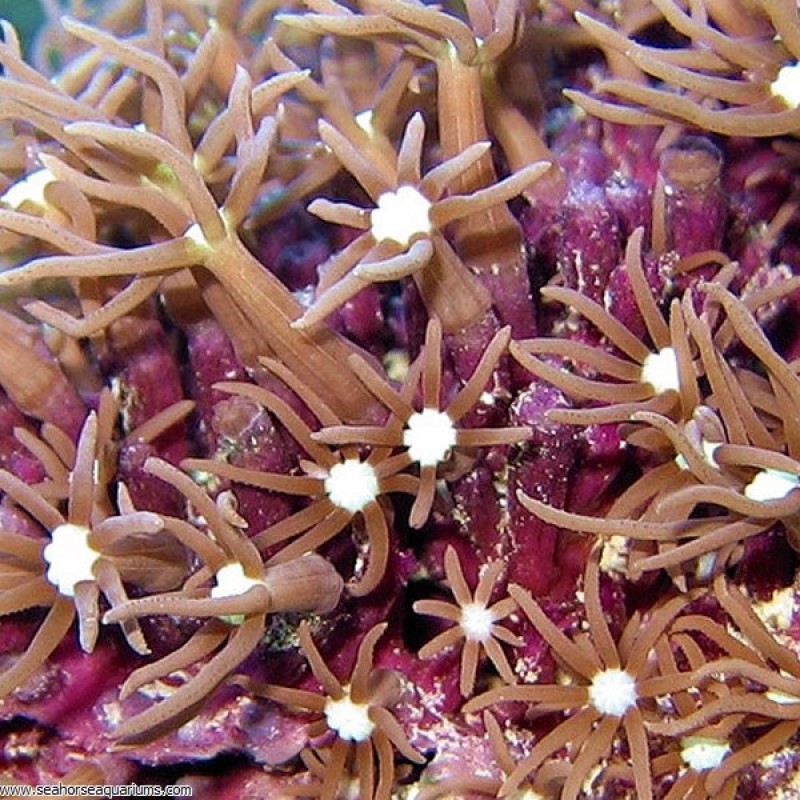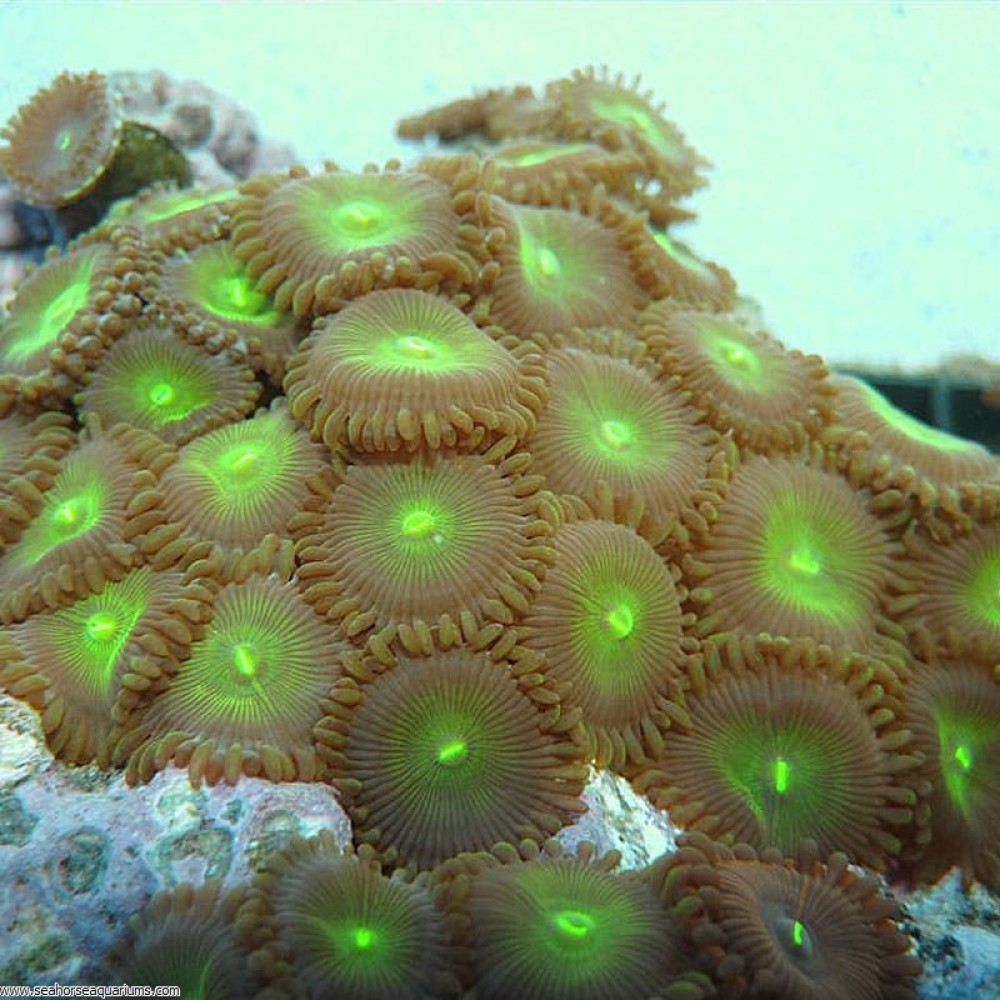
- Stock: Call To Order
- Model: -
- EAN: 5027656304509
Arrive Alive
If your fish, coral, plant, or invertebrate doesn't arrive alive and stay alive for 2 days, we'll credit your account or refund your money.
The Protopalythoa Button Polyp Corals, also referred to as Moon Polyps, Encrusting Anemones, or Sea Mats, are generally brown or tan in color, but may also be green and fluoresce under actinic lighting. They are a colonial animal with multiple individual polyps attached to a piece of live rock or coral rubble.
They are very easy to maintain in the reef aquarium. Their polyps have the ability to sting other animals and are semi-aggressive, therefore, they need to have space between their colony and any neighbors. They also grow rapidly and will crowd out their neighbors including any sessile life.
They require a medium light level combined with a medium to strong water movement within the aquarium. They will reproduce easily in the reef aquarium by budding (splitting off a portion of their base or mouth), which will increase the size of their colony. For continued good health, they will also require the addition of iodine and other trace elements to the water.
The symbiotic algae zooxanthellae hosted within their bodies provides the majority of their nutritional requirements through photosynthesis. They benefit from weekly feedings of micro-plankton or brine shrimp which should be fed to each individual of the colony.
| File Name | Size | Link |
|---|---|---|
| 30 How to care for Corals.pdf (Total downloads: 10860) | 226.67KiB | Download |
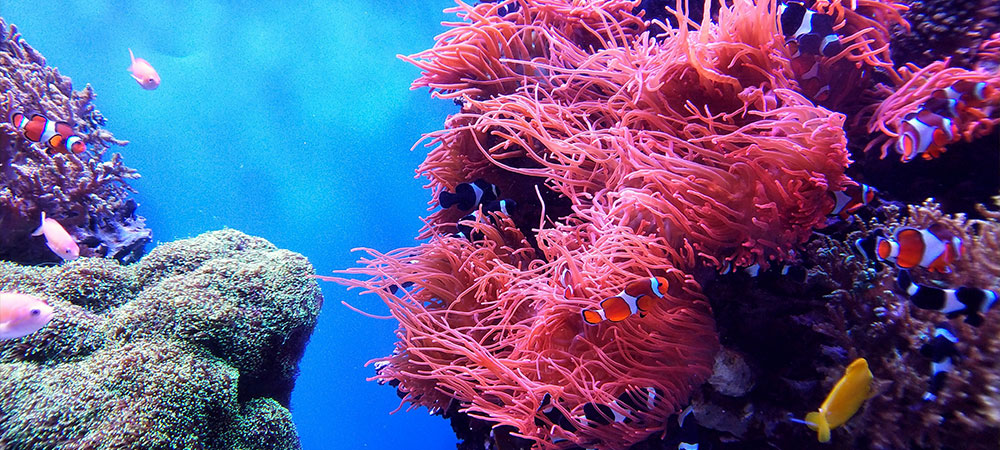
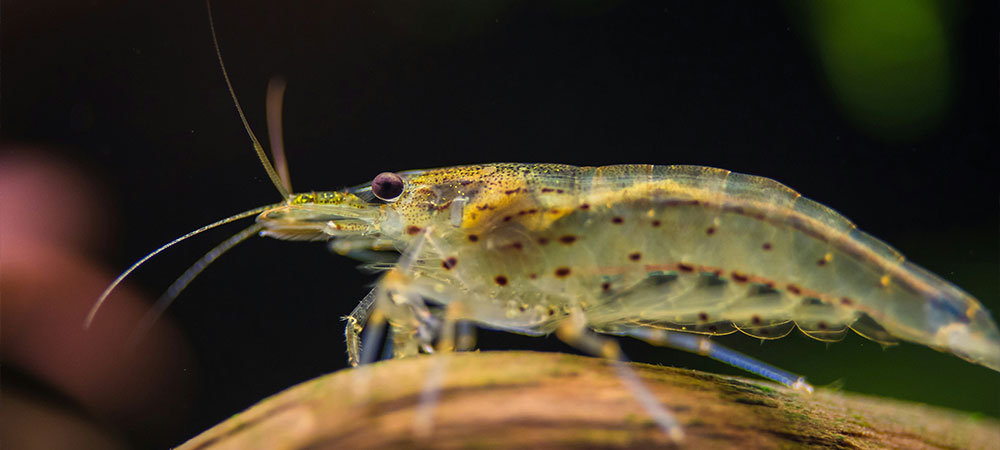
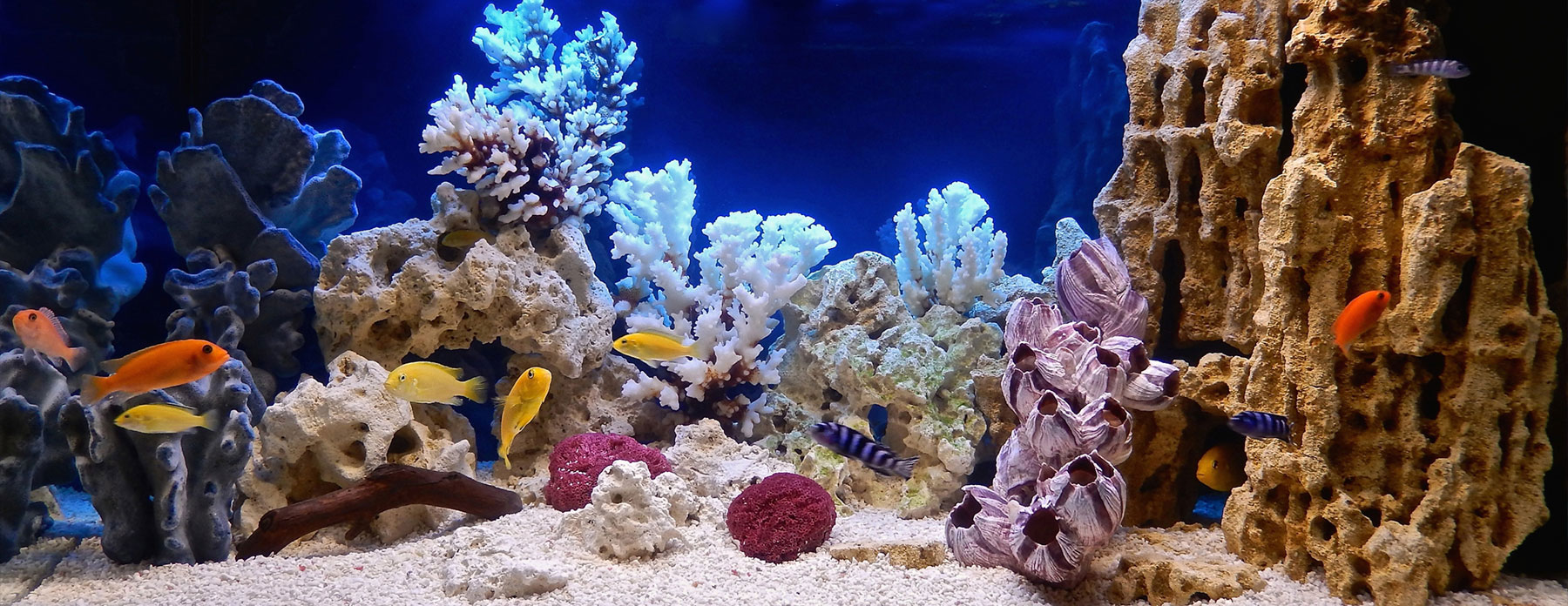

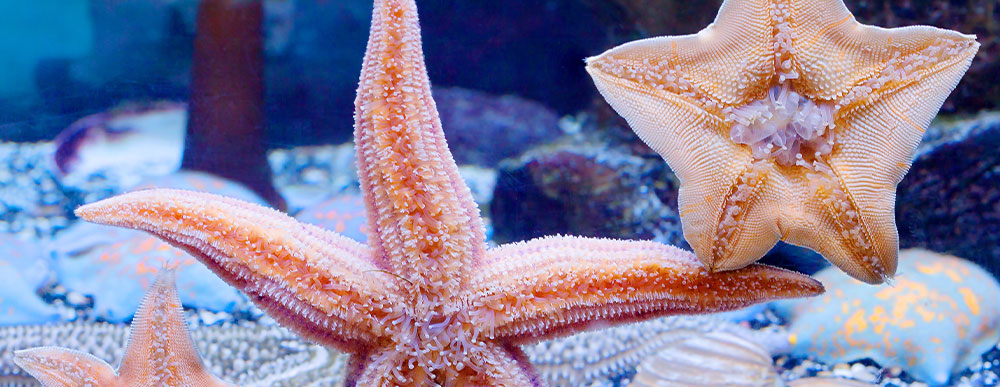
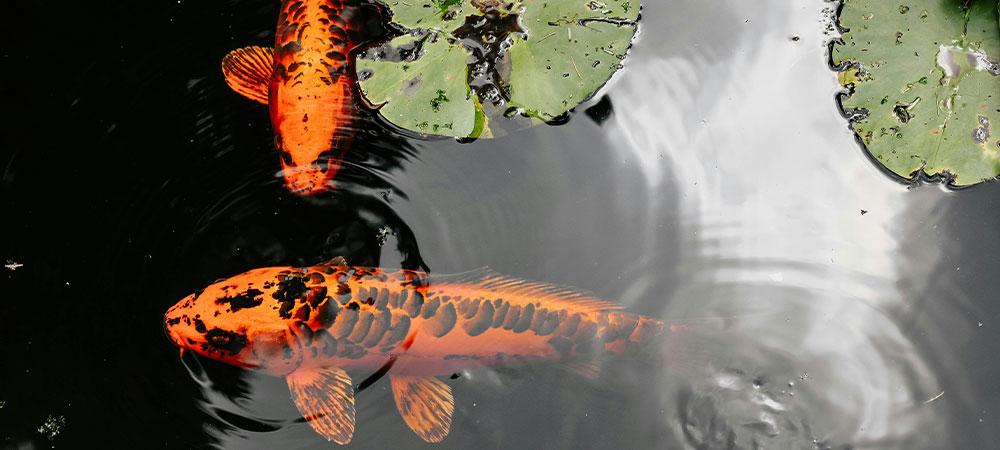
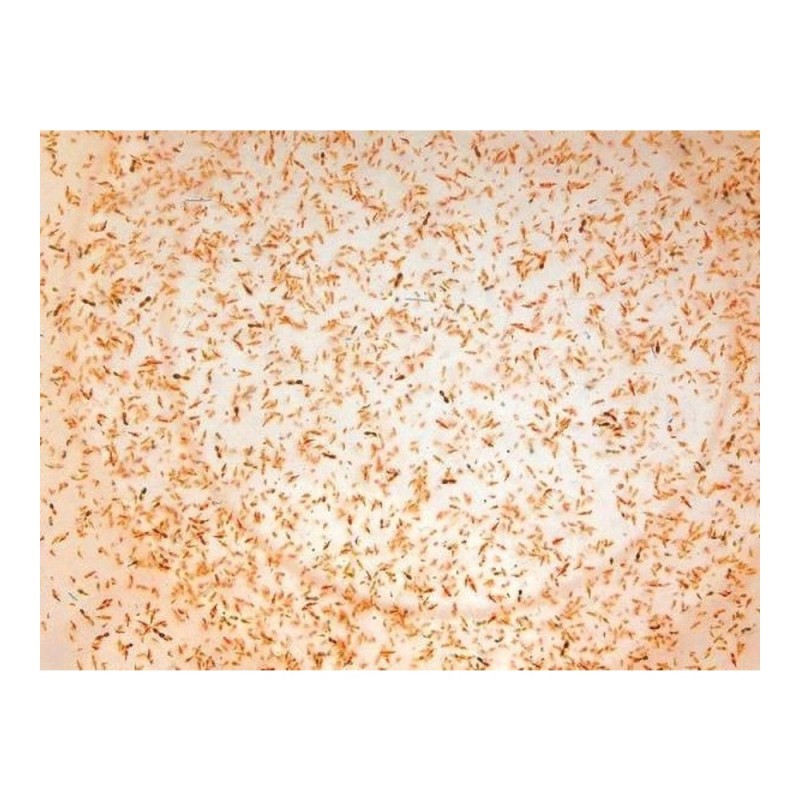
-800x800.jpg)
